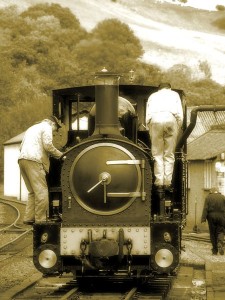
Some of the activities that are covered with this guide from Safe Work Australia include:
- Use
- Operation
- Restoration
- Maintenance
- Modification
- Servicing
- Repairing
- And housing
The full guide is located at http://www.safeworkaustralia.gov.au and is available for anyone that is involved with heritage plant in any way to download to ensure that all health and safety responsibilities are covered before work commences:
You may become involved in these activities by offering advice, assisting with repairs or maintenance, by designing aspects of the heritage plant for reproduction or by reproducing items. You may also become involved in these activities by restoring heritage plant for display in a museum, park or at an agricultural show or offering rides and demonstrating how they work.
This guide should be read and used together with the Work Health and Safety Act(the WHS Act), the Work Health and Safety Regulations (the WHS Regulations) and other codes of practice like the Code of practice: How to Manage Health and Safety Risks and Code of practice: Managing Risks associated with Plant at the Workplace.
1.2 What is heritage plant?
Heritage plant includes machinery, equipment, appliances, implements or tools, which form part of Australia’s industrial heritage. To be considered of heritage value the heritage plant will be at least 30 years old and no longer in productive service in industry. Certain replicas may be considered heritage plant.
Hand-held plant relying exclusively on manual power for its operation is not covered by the WHS regulations.
Plant manufactured to an original heritage plant design is also considered heritage plant where it is not placed in regular productive service.
Examples of heritage plant include:
- land-based steam traction or stationary engines and similar plant which operate under pressure
- stationary oil engines
- wheeled or tracked self-propelled tractors
- water craft, whether steam driven or powered by an internal combustion engine
- load shifting and earthmoving equipment
- belt-driven agricultural or industrial equipment
- railway locomotives and rolling stock not covered under rail laws.
A heritage boiler is a boiler manufactured before 1952 and used for a historical purpose or activity, including an activity ancillary to a historical activity.
The year 1952 is when AS CB1-1952: The design, construction, inspection and operation of boilers and unfired pressure vessels; and their appurtenances (known as the SAA Boiler Code) commenced and boiler designs started to be regulated.
Heritage plant does not include:
- plant regulated solely under rail, road and traffic, or maritime legislation
- miniature and scale models.
Further definitions of key terms used in this Guide are listed in Appendix A.
1.3 Who has health and safety duties in relation to heritage plant?
People who carry out activities involving heritage plant as part of their business or undertaking, at a public event where Schedule 1 to the WHS Act has been enacted or people who have the capacity to influence the health and safety of others have duties under the WHS laws. The WHS laws refer to these people as a person who conducts a business or undertaking with management or control of plant, including heritage plant.
A person who conducts a business or undertaking that carries out activities involving heritage plant should:
- consider what is known, or ought reasonably be known, about the identified hazards and risks to health and safety
- eliminate the risks, or if this is not reasonably practicable, minimise them so far as is reasonably practicable, and
- pass on the necessary information you have to ensure others involved in the process, or with the heritage plant later on in the future, can carry out their activities safely.
Source:http://www.safeworkaustralia.gov.au/sites/swa/about/publications/pages/heritage-plant
It is important for everyone that works with any type of plant, regardless of the age of the equipment, is aware of the safety procedures that are applicable to the work they are conducting.
Health and safety regulations are in force for the protection of all workers and working with heritage plant is no exception.



